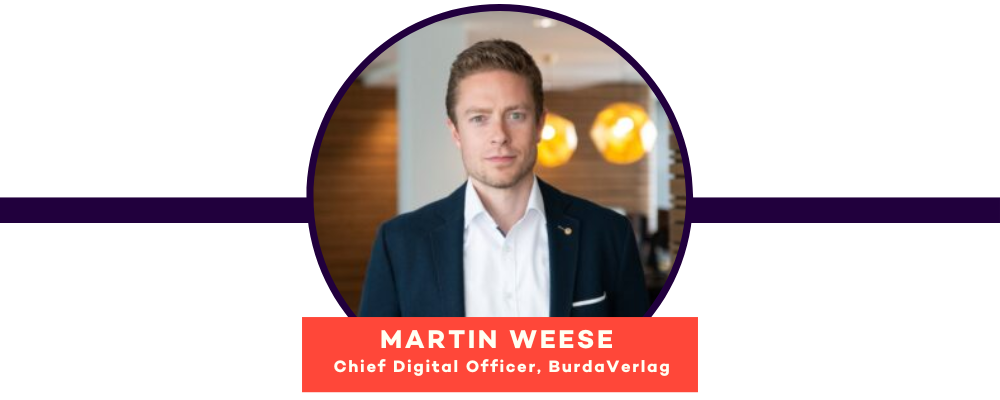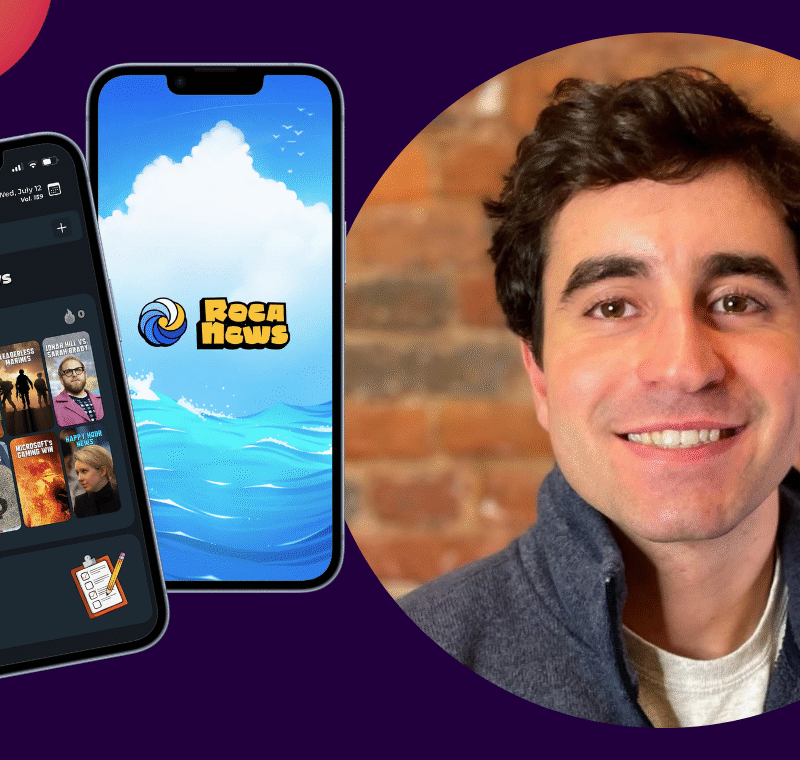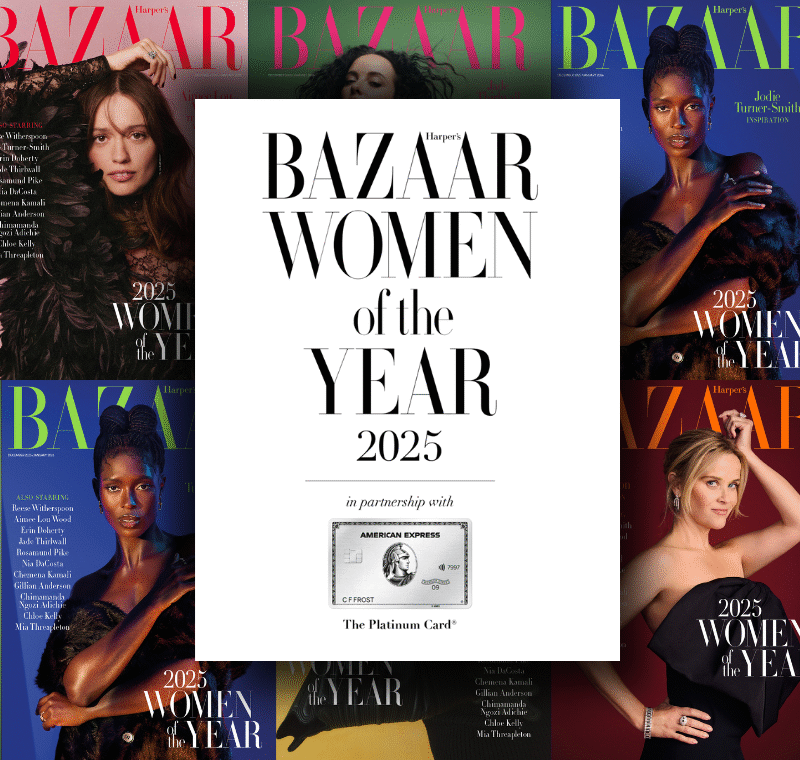Burda’s Martin Weese: Reinvention in the age of AI
At the FIPP World Congress, BurdaVerlag’s Chief Digital Officer will explore how publishers can adapt structures, strategies, and revenue models to survive and thrive in uncertain times
“Digital transformation is an ongoing journey, constantly driven by the innovation power of major digital players from the US. Strategies that seem optimal today can quickly become outdated.”
For Martin Weese, Chief Digital Officer at BurdaVerlag, this constant state of flux has defined his career. From building pioneering products at ProSiebenSat.1 to steering Burda’s Asian business through the fallout of COVID-19, Martin has seen firsthand that success in digital is less about a single bold play and more about resilience, reinvention, and organisational adaptability.
“At ProSiebenSat.1, Germany’s largest broadcaster, I developed and launched a live entertainment quiz app inspired by an innovative US model,” he says. This experience taught him that even with a standout product, markets respond differently and success can’t simply be replicated across them. “Sometimes, being the first player demands a substantial marketing investment, while entering the market as a strong second can be more attractive.”
His next big test came when he assumed the COO role for Burda’s Asian operations just as COVID-19 brought luxury travel – the division’s core business – to a standstill. “We redefined the value proposition of our websites and built a tech and product team in a central hub serving the region,” he says, describing digital transformation as “a marathon”: “It requires time to build organisational structures, recruit talent, and develop new products. It’s also crucial to reflect on achievements to maintain the team’s motivation over a long period of time.”

Structures, cultures, people
One of Martin’s clearest lessons has been that transformation can’t be reduced to strategy diagrams and KPIs; it must be lived through people.
“When acquiring and integrating our closest market competitor [in Poland], it became clear that drawing an ideal organisational structure on paper isn’t enough. Sometimes, it’s more effective to build structures around individuals and their expertise to maximise potential.”
That philosophy shapes his current work at BurdaVerlag. While digital strategy demands efficiency and cost-consciousness, Martin stresses that it is talent – aligned in the right cultural and organisational framework – that ultimately unlocks transformation.
“The media industry demands ongoing innovation, and I firmly believe that talented individuals in the right organisational setup can tackle any crisis or market changes with fresh, inventive ideas.”
Core values in the AI era
For Martin, digital growth must be grounded in brand trust. “In the era of AI-driven content creation, our brand value stands as our most significant asset. As AI chatbots rise and search behaviours evolve, traditional reach models will gradually lose their impact. Therefore, forging close user relationships grounded in our brand and content, rather than focusing on short-term, anonymous reach through Google via optimised headlines is key.”
And while reach remains important, he says it is no longer the endgame. “For me, digital success means sustaining reach models for as long as possible, to fund the shift toward paid products and other consumer-centric value propositions,” he says.
Diversification in practice
At the upcoming FIPP World Congress, Martin will outline how Burda is building diversified revenue streams.
“It’s about building additional revenue pillars beyond a reach-based advertising model, such as paid value propositions, B2B collaborations, and lead generation models. Moreover, it’s about creating new digital products like apps that focus on personalised B2C services rather than content.”
But innovation alone isn’t enough. “I’ll also cover how we’ve built organisational structures that allow a balanced approach between efficient centralisation and local agility,” he says.
“The rapid advancements in generative AI as well as constant market challenges demand we act faster than ever before. I’ll be sharing examples of roles and structures we’ve redefined and invested in to enable our business to adapt swiftly to new situations while maintaining cost-consciousness.”
Balancing today and tomorrow
Publishers often face a double bind, caught between traditional models in decline and new ones that are as yet unproven. Martin argues the key is balance.
“Traditional business models experience declining profitability while new models often require initial investment before they reach profitability,” he says. ”Ultimately, publishers need to strike a delicate balance between cost discipline and investments. Personally, I advocate for strategic investments but it’s crucial not to put all your eggs in one basket given the market uncertainties across various dimensions.”
Testing, he believes, is the bridge between the present and the future.
“It’s vital to test new tech and product solutions to generate sufficient insights for when the market is ready. Moreover, investing in innovative business models and products is important, but it must be done without significantly compromising profitability in order to not risk your future business foundation.”
Collaboration through FIPP
Martin has also had a front-row seat to global industry collaboration through his position on the FIPP Board.
“In today’s world, publishers aren’t competitors; the real competition comes from major players like Google and Meta, which dominate direct user interactions and capture a significant share of the marketing spend,” he says. “FIPP helps its members to build and scale market leading media businesses through connecting people, collaboration amongst its members, sharing success stories and learnings across markets, as well as through business partnerships.”
That network, he argues, becomes even more valuable in turbulent times.
“This applies not only to periods of significant global change but is even more critical in such times. Additionally, on a personal level, I very much appreciate the opportunity to meet and engage with numerous inspiring individuals.”
The next five years
Martin predicts sweeping disruption in the near future.
“AI chatbots are set to become mainstream, with many people having their paid virtual assistants on their electronic device, altering the role websites play. The trend we’ve observed with Google’s AI offerings will intensify, leading to a significant decrease in reach for websites that simply provide straightforward answers to questions.”
Smaller publishers, he warns, may face existential challenges.
“Smaller, niche publishers are likely to face tough times, and I anticipate that some websites and smaller publishers may not survive the coming years.” he says. “The overall lower search volume on Google in combination with less clickouts, the aggregation of news – as already seen with AI summaries in Google Discover – is only the beginning and will lead to shrinking margins across the digital publishing industry.”
But the future, he says, may also bring a shift in market dynamics. “Eventually there will be a shift in the market forces posing difficulties for AI providers in sourcing fresh content, and that will finally lead to the compensation of publishers. I hope for a simple API framework with a transparent monetisation logic, but ultimately, market dynamics will shape the solutions.”
He also believes that technological change may spark counter-movements. “The way we use our smartphones and other electronic devices will involve much more voice interaction. The familiar home screen with apps might even evolve into a new format, with apps serving as content APIs from which AI bots will extract the relevant information to then present them in a personalised manner. Extended Reality (XR) will eventually become affordable, and more hardware will offer immersive experiences. This overall progress might also lead to a counter-trend, with individuals longing for the past and willing to pay for nostalgic experiences.”
No ‘business as usual’
What excites Martin most is that the industry stands on the cusp of transformation. “Overall, it’s an exciting time, as the way we’ve learned to navigate the internet over the years is set to change fundamentally – though the exact nature of this change remains uncertain. I am truly convinced that magazine media will always have its place, both in print and digital, but a simple ‘business as usual’ approach, particularly in digital, will not be sufficient to thrive in the future.”










